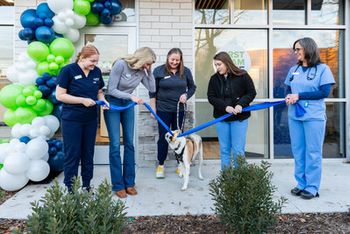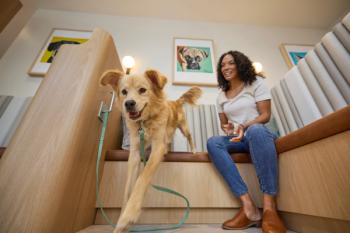
Sidestep sticker-shock
You've spent a year researching the benefits of laser surgery, and you think this new service will enhance your practice's surgical options. You've even selected the unit and considered financing options. But have you done all your homework? Before you buy expensive equipment, take time to calculate the financial benefits--and hidden costs.
By Mary Lou Paoletti, CPA, and Cynthia R. Wutchiett, CPA, financial editor
You've spent a year researching the benefits of laser surgery, and you think this new service will enhance your practice's surgical options. You've even selected the unit and considered financing options. But have you done all your homework? Before you buy expensive equipment, take time to calculate the financial benefits--and hidden costs.
Beyond the sticker price, new equipment often carries such expenses as training, hiring additional staff, supplies, maintenance, and upgrades. If you borrow money for the purchase, you'll add interest costs. And if you pay cash, you'll lose interest income on that money and reduce funds available to pay operating costs, save for retirement, or provide a return on your investment. To make an informed decision, you must evaluate the true economic impact of equipment purchases.
Begin with a budget
Ideally, you know how much you can spend on equipment each year. Savvy owners know investing in new equipment helps grow the practice. Participants in the 1998 Well-Managed Practice Study by Wutchiett & Associates Inc. and Veterinary Economics spend 2 percent to 3 percent of revenue on new medical equipment. Many owners earmark an additional 1 percent to 2 percent to upgrade technology (computers, software, and phone systems), enhance the facility, buy practice vehicles, or replace furniture and fixtures.
To ensure you can buy and upgrade equipment each year, establish an annual budget. First allocate 2 percent to 3 percent of revenue for reinvestment in your practice. This includes payments (principal and interest) for leases or loans as well as new purchases. Consult your financial advisor to maximize tax savings. Under Internal Revenue Service (IRS) Code Section 179, most purchases (cash and bank-financed) and some leases qualify for a depreciation deduction equal to the purchase price. You must claim the deduction the year you acquire the equipment, and you can't exceed annual limits of $19,000 for 1999, $20,000 for 2000, and $24,000 for 2001. You can maximize deductions by adjusting the amount you allocate for equipment to meet the annual limit (Figure 1).
To prioritize buying decisions, keep a "wish list" for your practice. Ask associates and staff members to suggest equipment that would enhance their efficiency. Estimate the cost to acquire and maintain each item. Then develop a plan that lets you evenly distribute major purchases over time and control the impact on cash flow.
When considering an equipment purchase, make sure it will meet at least one of these criteria: improve patient care, lower operating costs, or increase revenue. This will help you set priorities, says Karen Heidgerd, practice administrator at Animal General in New York City, winner of a 1999 Practice of Excellence Award, co-sponsored by Pfizer Animal Health and Veterinary Economics. "We consider two factors when evaluating equipment purchases. First, is this equipment in the best interests of our patients? We investigate whether the equipment will let us accurately and reliably provide the best care. Second, and equally important, will this equipment improve efficiency? If we keep these goals in mind, revenue increases as a result," she says.
Determine equipment costs
Once you complete a budget, decide whether you can truly afford the equipment. Look beyond the sticker price (including tax and installation) to determine the total cost. Say you plan to buy a surgical laser and will attend two or three wet labs in addition to vendor-provided training. You won't need to hire extra employees, and the equipment price includes initial supplies. You plan to use funds from an investment account to buy the unit. Although the surgical laser is $27,300, the cost of wet-lab training and travel ($1,500) and lost interest income ($3,400 with a 6 percent annual return) increases the total purchase price to $32,200 (Figure 2).
Next, estimate the impact of the purchase on cash flow. This includes additional revenue and the cost of the equipment. The most common methods are to calculate the payback period and net present value.
To figure the payback period, first estimate the annual net income (revenue minus operating costs) the equipment lets you generate. Divide the total purchase price by the net income to calculate the number of years required to recapture your investment. To estimate the annual return on your investment, divide the net income by the total acquisition cost (Figure 2).
Using the net present value method may require help from your accountant or financial advisor. This formula recognizes that inflation reduces the value of your money over time. An accountant adjusts the expected income using value tables that show how a dollar is discounted at different inflation rates over the expected payback period.
Compare the results of these two methods. Ideally, a cash purchase should indicate less than two years for the equipment to generate profits. If you lease the equipment, additional profits should occur well before the lease expires. For some practices, a payback period beyond two years is acceptable if the equipment enhances patient care and client service.
Should you lease or buy?
Deciding whether to lease or buy equipment may require help from your accountant or financial advisor. You'll need to calculate the net present value of the cash flow over the lease term and compare that figure with the net present value for a cash purchase or loan acquisition. Before signing a lease, consider the interest rate, early termination penalties, early repayment options, signing fees, and additional personal property taxes. Also review the leasing company's experience, credibility, and flexibility, and answer these questions:
How long will I use the unit?
When the lease expires, who will dispose of the asset?
Who's responsible for ensuring equipment meets OSHA regulations?
What's considered normal wear and tear for the equipment?
Will the lessor pay for equipment upgrades during the lease term?
If you decide to lease the equipment, you can choose from three methods. Consider which one works best for your practice.
Capital lease. This method is considered a sale to the lessee. The agreement must meet one of these criteria: It transfers ownership to the lessee before the lease expires, the lessee may buy the equipment for a bargain price (sometimes $1) when the lease terminates, the lease term is at least 75 percent of the equipment's estimated life, or the total lease payment equals or exceeds 90 percent of the equipment's fair market value. If you finance equipment with a capital lease, you can treat the value of the equipment like a depreciable asset under IRS Section 179. However, you're typically responsible for equipment maintenance and insurance.
Operating lease. This lets the lessee use the equipment for a fraction of its life. Payments are usually lower than a capital lease. The lessee returns the equipment once the lease has expired and can't claim the lease as debt. In general, this payment is treated as a business expense during the lease term, which means you can deduct payments when calculating taxable income. Consider an operating lease if you'll upgrade or trade in the equipment when the lease expires.
True or fair market lease. With this variation on an operating lease, the lessee can choose to extend the term, return the equipment, or buy it at fair market value.
Some vendors or financing companies offer specialty leases. These options may let you seasonally skip a payment without a penalty, include maintenance and operating costs, or feature variable-step payments. Some allow you to reduce or skip payments when your supply purchases meet a quota.
"When we're considering whether to buy or lease equipment, we investigate both sides," says Heidgerd. "If we'll upgrade the equipment often, we usually choose a lease. Through careful research, we've found some creative options. Our copier lease includes service, toner, and supplies for the entire three-year term. We're also leasing a new dental unit, but the company waives payments if supply purchases meet a quarterly quota." A lease makes sense for equipment that's subject to technical obsolescence--for example, computers, phone systems, and copiers.
Once you invest in equipment, make sure every staff member helps increase its use. Design a training schedule to educate employees on the use and benefits of the new equipment. When Dr. Greg Edwards of Napoleon Veterinary Clinic in Napoleon, Ohio, bought an endoscope, he scheduled training for everyone. "Learning about the endoscope and seeing demonstrations helped staff members educate clients," he says.
In addition, promote the equipment and service to clients during annual exams. Also send a press release to local media. If you're the first hospital in the area to offer laser surgery, endoscopy, or ultrasonography, you can generate additional publicity. Encourage hospital tours so pet owners can see how you continually improve your offerings. Show clients you're providing the latest medical care and services to their beloved pets. As your practice invests in high-tech tools, you'll find that a well-planned equipment purchase more than pays for itself.
August 1998 Veterinary Economics
Newsletter
From exam room tips to practice management insights, get trusted veterinary news delivered straight to your inbox—subscribe to dvm360.




